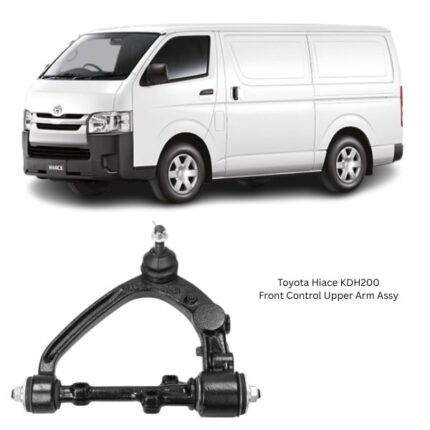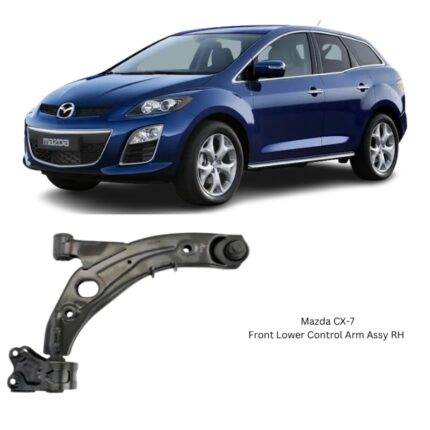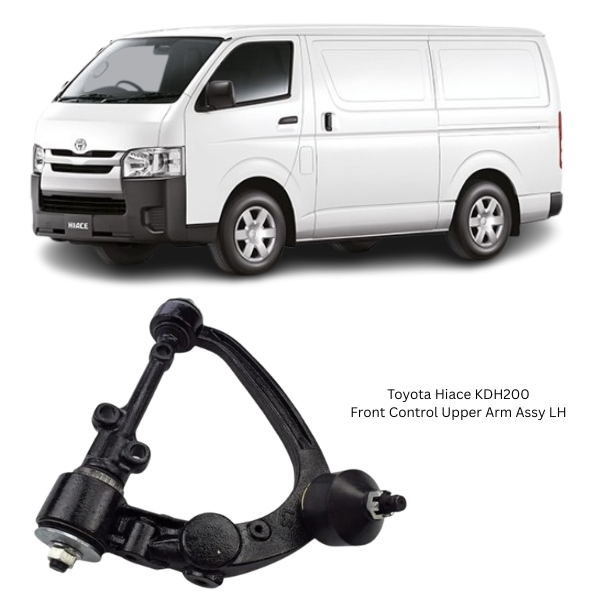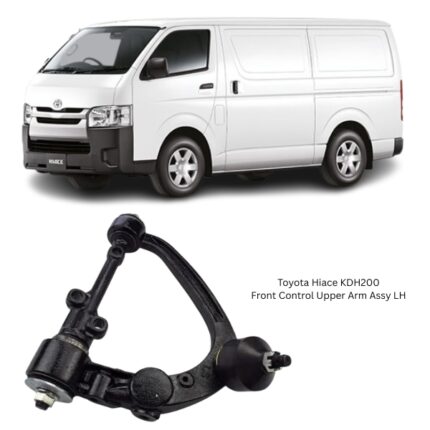Get Toyota Hiace KDH200 Front Control Upper Arm Assy LH 48067-29225 In Kenya
The Front Control Upper Arm Assembly LH (Left-Hand) is a vital suspension component found on the front left side of a vehicle. Although often overlooked, it plays a crucial role in controlling suspension movement, maintaining correct wheel alignment, and ensuring stable handling. It works in conjunction with the lower control arm and is most commonly seen in double-wishbone and multi-link suspension systems.
Understanding this component’s function, benefits, symptoms of failure, and maintenance is essential for both vehicle performance and safety.
1. What Is the Front Control Upper Arm Assembly LH?
The Front Control Upper Arm Assembly LH is an upper suspension linkage located on the driver’s side of the vehicle. It connects the vehicle’s chassis or frame to the steering knuckle via a ball joint and pivots on bushings. This allows the wheel to move vertically over bumps while keeping it aligned with the road surface.
This assembly is often a part of a double-wishbone suspension setup, where both an upper and lower control arm manage the wheel’s position and movement. In such systems, the upper control arm helps regulate the wheel’s camber angle and controls side-to-side movement.
2. Components of the Front Upper Control Arm Assembly LH
The upper control arm is more than just a metal arm; it includes several integrated elements that ensure functionality and durability:
-
Arm Structure: Typically fabricated from forged steel, stamped steel, or lightweight aluminum, shaped for rigidity and optimal geometry.
-
Bushings: These are rubber or polyurethane components where the arm mounts to the chassis. They help absorb shocks and allow for flexible movement.
-
Ball Joint: Located at the outer end of the control arm, this joint connects to the steering knuckle and allows for steering and suspension articulation.
-
Mounting Hardware: Bolts, washers, and sleeves that ensure a secure fitment to the subframe or body of the vehicle.
3. Main Functions of the Upper Control Arm LH
a) Maintaining Suspension Geometry
The upper control arm helps preserve optimal wheel alignment during cornering, braking, and vertical motion of the suspension. It keeps the camber angle within specifications.
b) Supporting Vertical Wheel Travel
It permits the up-and-down motion of the front wheel when encountering uneven surfaces or potholes, ensuring that the tire remains in contact with the road.
c) Enabling Smooth Steering
Through its connection with the steering knuckle via the ball joint, the control arm allows the wheel to turn left and right while remaining stable.
d) Enhancing Ride Quality
The bushings help absorb road vibrations and reduce harshness, contributing to a more comfortable and quiet ride.
4. Advantages of a Quality Front Upper Control Arm LH
-
Improved Handling and Control: Keeps the front wheel properly aligned during dynamic driving situations.
-
Better Tire Life: Helps maintain even tire contact with the road, reducing uneven wear.
-
Increased Comfort: High-quality bushings and joints isolate vibrations and reduce noise transmission into the cabin.
-
Enhanced Durability: Precision-engineered materials withstand corrosion, impact, and stress over time.
-
Safer Driving Experience: Proper suspension geometry ensures reliable steering response and vehicle behavior during braking and cornering.
5. Common Signs of a Failing Upper Control Arm LH
Failure of the upper control arm can lead to several noticeable symptoms, including:
-
Clunking or Knocking Sounds: Especially when driving over speed bumps or rough roads, due to worn bushings or loose ball joints.
-
Uneven Tire Wear: A failed upper arm can disrupt alignment, leading to excessive wear on the inner or outer edge of the tire.
-
Poor Steering Control: Steering may feel loose, unresponsive, or pull to one side.
-
Excessive Vibration: Vibrations in the steering wheel, especially at higher speeds or when braking.
-
Visible Damage: Cracks, rust, or deformation of the arm body or deterioration of rubber bushings.
6. Causes of Wear and Failure
-
Aging and Mileage: Rubber bushings and ball joints degrade over time due to exposure to heat, friction, and weather.
-
Driving Conditions: Off-road use, potholes, or rough terrain increase stress on the suspension system.
-
Corrosion: Exposure to road salt, water, and debris can cause rust and weaken the arm structure.
-
Overloading: Excessive vehicle weight can strain and deform suspension components.
-
Accidents and Impacts: A hard impact from hitting a curb or involvement in a collision can bend or break the arm or its joints.
7. How to Replace the Front Upper Control Arm LH
Replacing a worn upper control arm is critical for restoring vehicle stability and safety.
Tools Required:
-
Jack and jack stands
-
Socket and wrench set
-
Ball joint separator or pickle fork
-
Torque wrench
-
Penetrating oil (for rusted bolts)
Steps:
-
Prepare the Vehicle: Park on a level surface, engage the handbrake, and use wheel chocks.
-
Lift and Secure: Jack up the front of the vehicle and support it with jack stands.
-
Remove the Wheel: Provides clear access to the upper control arm.
-
Disconnect Ball Joint: Remove the nut and separate the ball joint from the steering knuckle.
-
Unbolt Control Arm: Unscrew the bolts securing the arm to the frame or mounting bracket.
-
Install New Arm: Position the new arm, align the bushings, and secure with bolts and torque to spec.
-
Reconnect Ball Joint: Fit the ball joint into the steering knuckle and tighten.
-
Reinstall Wheel and Lower Vehicle
-
Wheel Alignment: Perform a full four-wheel alignment to ensure proper suspension geometry.
8. Maintenance Tips for Longevity
-
Periodic Inspection: Check for worn bushings, damaged ball joints, and rust during regular servicing.
-
Greasing: If your upper control arm has grease fittings, keep them lubricated to extend lifespan.
-
Clean Suspension Components: Wash away dirt, salt, and debris to prevent rust and premature wear.
-
Avoid Harsh Driving: Reduce speed on rough roads to prevent unnecessary suspension stress.
-
Replace in Pairs (if needed): If one upper arm is worn, the other may follow soon. Replacing both can save time and ensure balance.
9. Differences Between LH and RH Upper Control Arms
Though both sides serve the same purpose, they are not interchangeable. Differences include:
-
Orientation and Shape: The left-hand and right-hand arms are mirror images and designed to fit specific mounting points.
-
Ball Joint Angles: Designed differently for each side to match suspension geometry.
-
Mounting Point Position: Bushings and holes are placed to align only with the corresponding side.
Always verify part compatibility with your specific vehicle model before purchase or installation.
Follow us on Facebook for more parts.





Reviews
Clear filtersThere are no reviews yet.